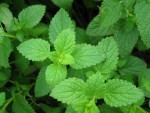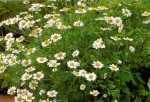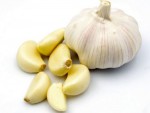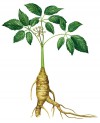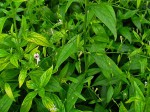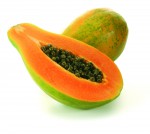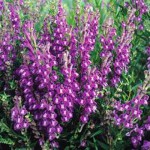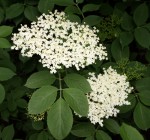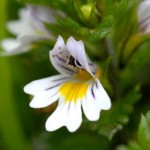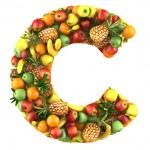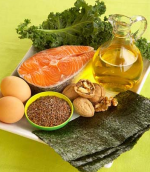Each of us has suffered, is suffering or will suffer from mild constipation throughout our lives. It is inevitable due to the diet most of us eat. As long as the bout of constipation does not last too long, we get through it by making slight adjustments to our daily diets. We usually increase the amount of fluids we drink. Drinking more is not the only thing we can do to help ourselves reduce the incidences of constipation.
Here are some natural herbal, homeopathic, nutritional and gustatory remedies to help you take better control of these periods of constipation.
The most straightforward way of combating constipation is to increase your fiber intake. Most of us do not eat enough fiber each day. Experts recommend we eat between 25 and 40g of fiber daily. This may sound like a lot but in actuality, it is not as much as we think.
Here are a few examples of high fiber foods that we should include in our daily eating plans:
- Raw oat bran, 1 ounce has 12g of fiber
- ½ cup of All Bran cereal has 10g of fiber
- 1 cup of cooked kidney beans has 16g of fiber
- 1 cup of small cooked white beans has 19g of fiber
- 1 cup of blueberries has 4g of fiber
- 1 cup of cooked pearl barley has 6g of fiber
- 3 cups of air popped popcorn has 4g of fiber
- 1 slice of whole wheat bread has 2g of fiber
- 1 cup of frozen green peas has 14g of fiber
- 1 ounce of almonds has 4g of fiber
- 1 ounce of flaxseed has 8g of fiber
- 1 cup of cooked cauliflower has 5g of fiber
- 1 cup of cooked broccoli has 5g of fiber
- 1 medium sized banana has 3g of fiber
- 1 medium sized pear has 6g of fiber
- ½ cup of dried peaches has 6g of fiber
As you can see, it is easy to boost our daily fiber intake.
Herbal remedies
- Alder buckthorn
- Used over the long term to treat constipation and to encourage the return of regular bowel movements
- Good remedy if the muscles of the colon are weak and if there is poor bile flow
- Milder than senna
- Butternut
- Valuable remedy for chronic constipation
- Better when combined with ginger or angelica
- Castor oil plant
- Prompts a bowel movement about 3 – 5 hours after ingestion
- Chinese rhubarb
- Helps to clear the colon without causing excessive cramping
- Great to use when the muscles of the large bowel are weak
- Make decoction using 1 teaspoon of herbs in 1 cup of water and take last thing at night.
- Crampbark
- Effective at relieving any muscle tension
- Dandelion
- One of the most detoxifying herbs
- Works on the liver and gallbladder to remove waste products
- Helps the kidneys remove waste products in the urine
- Make decoction using 20g of dandelion root in 3 cups of water and drink daily or use ground root to make an infusion and drink 3 -4 cups daily
- Fig
- Syrup of fig is a great herbal formula to relieve mild constipation
- Ginger
- Used in combination with many other herbs to aid digestion
- Licorice
- Gentle laxative
- Psyllium
- Suggested remedy is 1 tablespoon dissolved in 8-ounce glass of water or juice; drink immediately; follow with another glass of water to wash it all down.
- Senna
- Good short-term laxative but should not be used for than 10 days
- Yellow dock
- A good laxative but should be combined with dandelion root
- Stimulates large bowel function
- Reduced reabsorption of waste product
- Thought to improve bile flow
- Make decoction using 1 teaspoon of herb in 1 cup of water and take last thing at night
- Linseed
- Bulk laxative
- Should be taken with 5 times their volume of water
- Slippery elm
- Soothing herb
- Help alleviate conditions
- Flaxseed
- Suggested treatment is 1 teaspoon of ground seeds in 1 cup of water or juice up to three times daily. I add 1 tablespoon of seeds to my scrambled eggs and I keep regular soft bowel movements
- Papaya
- Contains proteolytic enzymes which are natural digestive aids
- Make a tea from the leaves
- Cascara sagrada
- Suggested treatment is up to 2 400- to 500mg capsules daily or ½ to 1 teaspoon of liquid extract per day.
- DO NOT USE IF PREGNANT OR NURSING
Dandelion root, licorice and yellow dock are mild laxatives.
Senna is a strong laxative and should only be taken when other herbs have failed.
Psyllium cleanses the colon and encourages normal bowel habits.
Crampbark can help spastic constipation.
Eat figs, apples and tamarind to ease constipation.
Homeopathic
- Bryonia
- Dry, hard stool and dry mucous membrane
- Stools are large, dry, hard and burnt looking
- Bloated abdomen
- Burning in the rectum after passing stool
- Great thirst
- All mucous membranes are dry
- Suggested remedy is 30c every 2 hours up to 10 doses
- Nux vomica
- Cramps and spasms in the anus with urgency to pass stool but with increasing difficulty doing so
- Suggested remedy is 6c every 2 hours up to 10 doses
- Alumina
- No desire to open the bowels until rectum is fully distended
- Difficulty in passing stool
- Stools may be soft and clay-like
- Suggested remedy is 6c every 2 hours p to 10 doses
- Opium
- No urge to pass stool for an extended length of time
- Digestion is sluggish and weak with lack of appetite
- Stools tend to retreat into rectum and are small, dark and very hard
- Plumbum metallicum
- Colicky pain in the stomach
- Constant urge to defecate but only small black ball-shaped feces is eliminated
- Painful urine retention
- Syphilinum
- Obstinate, sluggish bowels over many years
- Possible feeling that rectum is to tight
Nutritional
- Garlic
- Destroys harmful bacteria in the colon
- Vitamin C with bioflavonoids
- Cleansing and healing effect
- Apple pectin
- Adds fiber to the diet
- Essential fatty acids
- Maintains proper essential fatty acid balance to aid bowel movement
- Multienzyme complex
- Aids digestion
- Multivitamin
- Constipation blocks vitamin and nutrient absorption
- Vitamin B complex
- Aids in proper digestion
- Vitamin E
- Aids in healing the colon
Gustatory
- Apple, medium sized
- A 5 ounce apple with skin provides 3g of fiber
- The same apple without skin provides 2.7g of fiber
- It does not matter what color of apple
- Blueberries
- 100g of blueberries contain 2.4g of fiber
- Prune
- 100g of prunes have 7.1g of fiber
- Soybean
- Nearly 94% of total fiber is insoluble while the remainder is soluble.
- This is good because this fiber will increase fecal bulk, increase fecal water content, decrease intestinal transit time, and many other things
- Sesame seed
- Known to ease constipation through the oils found within these little seeds
- Oat bran
- Helps add bulk to fecal matter
MEDICAL DISCLAIMER
Credit
This document was created using a Contractology template available at http://www.freenetlaw.com.
No advice
This website contains general information about medical conditions and treatments. The information is not advice, and should not be treated as such.
Limitation of warranties
The medical information on this website is provided “as is” without any representations or warranties, express or implied. Natural Medicine Cures and its author make no representations or warranties in relation to the medical information on this website.
Without prejudice to the generality of the foregoing paragraph, Natural Medicine Cures and its author do not warrant that:
- the medical information on this website will be constantly available, or available at all; or
- the medical information on this website is complete, true, accurate, up-to-date, or non-misleading. Professional assistance If you have any specific questions about any medical matter you should consult your doctor or other professional healthcare provider. You should never delay seeking medical advice, disregard medical advice, or discontinue medical treatment because of information on this website. Nothing in this medical disclaimer will limit any of our liabilities in any way that is not permitted under applicable law, or exclude any of our liabilities that may not be excluded under applicable law.
- Liability
- If you think you may be suffering from any medical condition you should seek immediate medical attention.
- You must not rely on the information on this website as an alternative to medical advice from your doctor or other professional healthcare provider.



